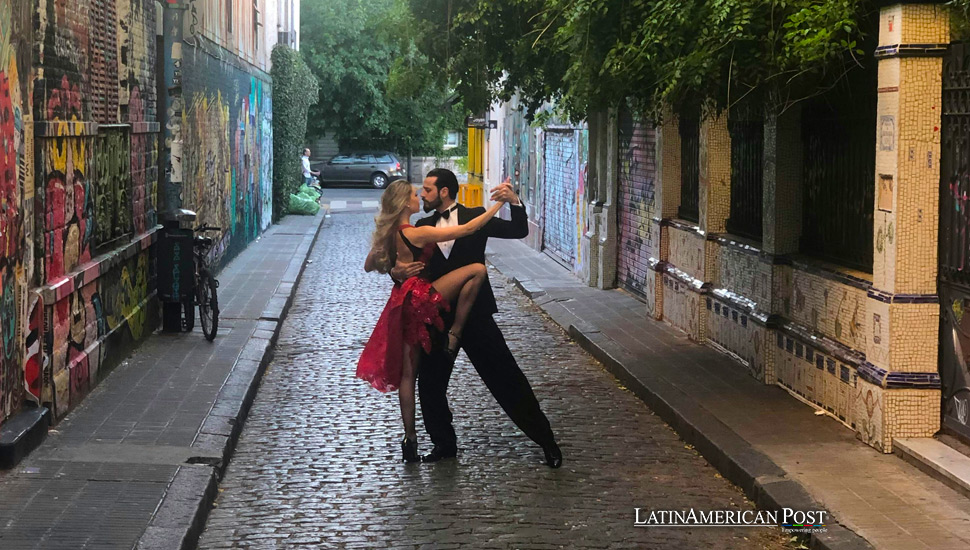The Tango Renaissance in Argentina Reclaims Identity

In the heart of Argentina, a Tango renaissance unfolds, breathing new life into the historic dance and reasserting its role as an essential marker of national identity and global cultural legacy. This feature delves into the resurgence of Tango, exploring its profound implications for Argentinian society and the international community.
Embracing Tradition: Tango’s Resurgence in Buenos Aires
As the sun sets over Buenos Aires, the city’s cobblestone streets come alive with the soulful strains of Tango music, heralding a vibrant renaissance of Argentina’s most iconic dance. Once confined to memories of a bygone era, Tango is now experiencing a vigorous revival, capturing the hearts of a new generation and reaffirming its place at the core of Argentina’s cultural identity. This resurgence is not merely a revival of dance steps and melodies; it is a movement towards reclaiming a rich cultural heritage, connecting Argentinians to their history, and showcasing their unique cultural contributions on the global stage.
The rhythmic pulsations of the bandoneon, the sultry embrace of partners, the passionate swirl of skirts – these are the hallmarks of Tango. This dance has transcended its steps to become a symbol of Argentina. In recent decades, a vibrant Tango renaissance has swept across the nation, reviving the dance and a profound sense of cultural identity. This resurgence, fueled by a combination of historical reflection, artistic innovation, and global recognition, presents a fascinating case study in cultural revival.
Tango’s origins lie in the late 19th century, emerging from the melting pot of Buenos Aires’ working-class neighborhoods. Influenced by European waltzes and milongas, along with African and Latin American rhythms, Tango captured the spirit of a rapidly evolving society. In the early 20th century, they ushered in the Golden Age of Tango, characterized by renowned composers like Carlos Gardel and iconic dance halls known as milongas. This period saw Tango not only captivating Argentinian society but also captivating international audiences, becoming a symbol of passion and cultural sophistication.
However, the latter half of the 20th century witnessed a decline in Tango’s popularity. Shifting cultural trends, political turmoil, and the rise of other dance styles contributed to its fading presence on the national stage. This decline prompted a sense of loss among Argentinians, leaving a void where the rhythmic pulse of Tango once resonated.
The Cultural Significance of Tango
Beyond its captivating movements, Tango carries a profound cultural significance for Argentina. It embodies the nation’s complex history, reflecting themes of passion, resilience, and nostalgia. The dance’s sensuality and improvisational nature resonate with Argentina’s spirit of independence and self-expression. For many Argentinians, Tango serves as a bridge to their past, connecting them to a rich cultural heritage and offering a sense of belonging.
The 1980s marked the beginning of the Tango Renaissance, driven by several key factors. The fall of the military dictatorship in Argentina led to a renewed sense of cultural exploration and a desire to reclaim national identity. Government initiatives, such as creating the National Tango Academy, supported Tango education and promotion. Cultural institutions organized festivals and competitions, fostering appreciation for the dance among young audiences.
A growing global interest in the dance further fueled the Tango renaissance. UNESCO’s designation of Tango as an Intangible Cultural Heritage of Humanity 2009 solidified its global significance. As Tango schools and performance venues sprouted worldwide, Argentinian dancers and musicians found new platforms to showcase their artistry, captivating international audiences with their talent and passion.
Today, Tango thrives beyond Argentina’s borders, serving as a powerful bridge between cultures. From vibrant dance halls in Buenos Aires to dedicated studios in Tokyo and Paris, Tango enthusiasts gather to learn, perform, and connect. This global phenomenon signifies more than just a dance craze; it represents a cultural exchange, fostering understanding and appreciation for Argentinian heritage worldwide.
Innovations in Tango
The Tango renaissance is not simply about preserving the past; it also embraces innovation. Contemporary Tango artists are pushing boundaries, experimenting with new musical arrangements, incorporating elements from other genres like jazz and electronic music, and exploring modern dance interpretations. These innovations, while sometimes met with resistance from traditionalists, contribute to the continued evolution of Tango and ensure its relevance for future generations.
The Tango renaissance has its challenges. Concerns regarding commercialization and the potential dilution of the dance’s authenticity remain. Additionally, issues of inclusivity and representation within the Tango community are being addressed, striving to make the dance more accessible and welcoming to diverse audiences. While critiques of the revival highlight concerns about cultural appropriation and gentrification, the vibrant discussions within the Tango community demonstrate its ongoing commitment to authenticity and inclusivity.
The impact of the Tango Renaissance extends far beyond cultural trends. For countless individuals, Tango has transformed lives, fostering deeper connections with Argentinian culture, forging meaningful relationships, and providing a platform for personal expression. From seasoned dancers who have witnessed Tango’s evolution firsthand to newcomers captivated by its allure, their stories represent the human connection at the heart of the revival.
The Future of Tango
As the Tango renaissance unfolds, this captivating dance’s future remains bright. By embracing innovation while preserving its cultural essence, Tango can continue to be a powerful symbol of Argentinian identity and a vibrant force in the global cultural landscape.
The cultural significance of Tango extends beyond Argentina. Its passionate rhythm and intricate steps have captured the imagination of artists worldwide, inspiring countless artistic interpretations. Films like “Tango” and “Shall We Dance?” have introduced Tango to new audiences, sparking a global fascination with the dance. The musicality of Tango has also transcended cultural boundaries. From the contemporary Tango compositions of Astor Piazzolla to the electrifying fusion of Tango and electronic music by the Gotan Project, Tango inspires musical innovation and appreciation across genres.
Also read: Digital David as Renaissance Meets Digital Art at Argentina’s Chaco Sculpture Biennial
The Tango Renaissance is a testament to the enduring power of cultural expression. It highlights the human desire to reconnect with tradition, reclaim identity, and share cultural heritage with the world. As the dance continues to evolve, one thing remains constant: the captivating essence of Tango, a dance born in the heart of Argentina, continues to pulsate with passion, resilience, and the promise of a vibrant future. Whether embraced in the intimate confines of a milonga or showcased on international stages, Tango serves as a reminder of the enduring power of cultural exchange and the universal language of artistic expression.




